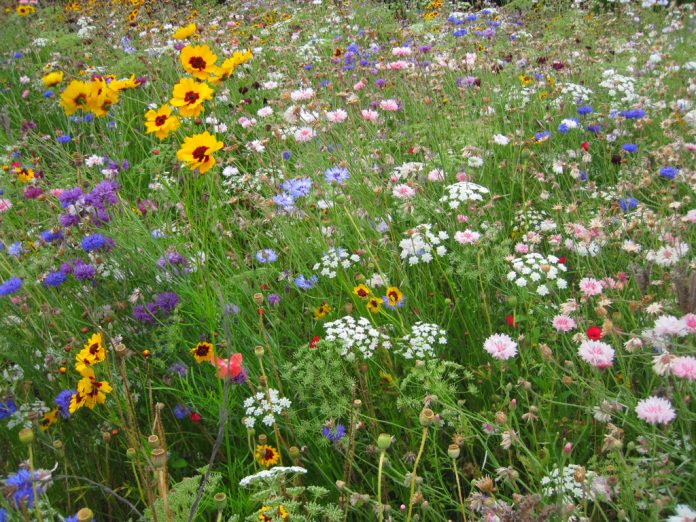A prairie is a natural-looking garden of native grasses and wildflowers. They are easy to establish and virtually maintenance free. Plus, they add color and attract pollinators to the landscape.
1Site selection
Think outside the box when selecting a site for your prairie. Unlike traditional vegetable gardens or raised beds that require an even surface, you can plant a prairie on a sloping hillside. You can even turn your lawn into a prairie and enjoy the bonuses of not mowing, reduced irrigation and lower fertilizer requirements.
Sun and soil are critical factors to selecting a good site for your prairie garden. Most prairie flowers require full sun, at least six to eight hours of direct sunlight each day. However, columbine, blazing star, aster, bergamot and mallow will grow in partial shade.
Test your soil to determine nutrient needs for the growing season. A soil test identifies deficiencies and diagnoses pH problems. A professional test from a lab costs about $20. Expect results in one to two weeks. Contact your county Extension office to locate a reputable lab near you.
2Measure your site
Determine the area’s square footage to purchase the right amount of seed.
Converting a large area like a lawn or hillside into a prairie requires a large volume of seed. Buy seed in bulk to save money. Ohio Prairie Nursery sells bulk seeds to cover 1/10th to 1 acre — 1/10th acre equals 4,356 square feet, that’s a 66×66-foot square plot.
3Select seed
A mix of annual and perennial wildflowers will produce colorful blooms from spring through fall. Annuals are flowers that bloom one season. Perennials return year after year; together they promise your prairie puts on a good show.
Native prairie grasses are either warm-season or cool-season. A blend of both produces a superior prairie. Colorful grasses like Purple Top and burgundy Indian Grass can complement the prairie’s overall look, and provide valuable nesting material for birds.
Several seed companies offer custom seed blends containing plant varieties that are well-adapted to our regional climate and soil.
My county’s Soil and Water Conservation District offers native wildflower seeds at a discounted price to promote conservation practices. Call your county’s office to inquire.
4Prepare bed
You will need to remove turf and weeds from your site prior to planting. You can accomplish this in several ways: by-hand, using herbicide or by smothering turf with black plastic sheet mulch. After removing turf, incorporate fertilizer and amendments according to your soil test results. Gently rake the exposed ground before broadcasting seeds.
5Sow seed
Just prior to planting, mix the seeds with Vermiculite or Perlite for more even distribution. Broadcast seed on the diagonal, and again on the opposite diagonal, making an X pattern for good coverage. Gently rake loose soil over the broadcasted seed, and then water thoroughly.
Allow your prairie to grow naturally. Hang birdhouses and native bee habitats nearby to boost pollinator presence. Don’t forget to provide a water source for birds, bees and butterflies. Enjoy the natural, low-maintenance landscape (and its visitors) all season long.













